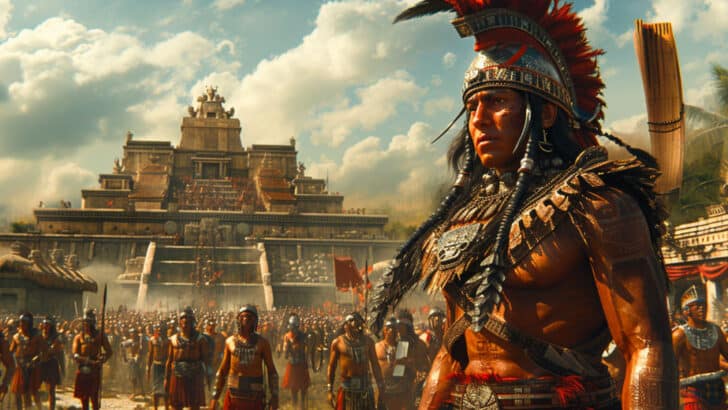The Aztec Myths: A Guide to the Ancient Stories and Legends
by Camilla Townsend (Thames & Hudson, £14.99 / €17.99)
I have long been fascinated by the great civilisations of the ancient Americas, the Aztecs of Mexico and the Incas of Peru, whose fall was brought about by the savage incursions of the Spanish conquistadores.
The conquest of Mexico especially is a moment in history that everyone should be aware of when talking about the role of religion in the world. That greed for gold more often than not drove the ambitions of our ancestors in ways we cannot overlook is an unavoidable truth.
Introduction
My introduction to this subject came about through a reading of a novel Montezuma’s Daughter (1891) by H. Rider Haggard. This highlighted for its English readers the deviousness of the Spaniards and the depravity of the Aztecs, especially concerning the horror of their penchant for mass human sacrifice,
I now learn from this book that much of what appeared in both the novel and several of the books I read since was in many ways quite misleading. In this respect Dr Camilla Townsend’s book is wonderfully informative about new perspectives on the whole subject of Mexican ancient history.
This begins with the simple fact that the people we call today Aztecs did not call themselves that; the term is a later scholarly invention. Indeed much that we thought we knew about these people came from such people as Bernal Diaz and the learned friars who follow in the train Cortez.
The Aztecs, she says, seemed to be completely controlled by their religion. Those hecatombs of human sacrifice were seen as a great part of it. She rebuts this.
Aztec religion, the surviving evidence indicates, was actually comprised of a variety of rich and compelling traditions”
“Readers may be surprised to learn that although there is a kernel of truth buried in this narrative, it is distorted almost beyond recognition. The story is largely what the invading Spaniards wished to believe themselves – and wished the world to believe – about the people they had conquered and were continuing to treat harshly. Aztec religion, the surviving evidence indicates, was actually comprised of a variety of rich and compelling traditions. Human sacrifice did have a place with the whole, but not in the way that it is generally portrayed. “
(Perhaps no more so than the killings involved in the auto-da-fé system in Spanish culture, or indeed in Mexican, where the last such was held in 1850.)
So this book starts again so to speak, being based entirely on indigenous sources, largely in the native Nahuatl language leaving aside everything of Spanish origin. The result is wonderfully enlightening.
Myths
The term “myths” she admits is a difficulty. For many students of religion and folklore it is a term for foundational religious stories, but to many others it means a narrative which is untrue. This, however, is a misunderstanding: myths are not lies; they are truths of a higher order.
This book, as the subtitle indicates, deals with ancient stories and legends. Irish readers will in this realm feel much at home. She outlines the ideas the Aztecs had of their divine universe. Here again she has a penetrating observation.
“According to this interpretation – and contrary to what westerners have often wanted to believe – the Aztecs were not really polytheistic. Rather they were pantheistic. Divinity was everywhere revealing itself to humans in the guise of virtually infinite divine beings, who were all aspects of the same force.”
She follows these broad observations while conducting a rapid survey of the beginnings of human beginnings as the Aztecs saw it – bound up in their settlement myths of a descent from some place in the far north. She advances then into the legends of history, for the Aztec were obsessive recorders of their own past. Interwoven with this is a chapter she calls “Talking to the Divine”.
The Mexicans of modern times may well be Catholics, but they also observe aside from the feasts of the church, the celebrations of their own ancient cultures”
This is a prelude to her account of how Christianity was introduced and began to pervade society, but not to the extent that it expelled the old ideas. (Is there a parallel here with what happened when St Patrick came to Ireland?)
The Mexicans of modern times may well be Catholics, but they also observe aside from the feasts of the church, the celebrations of their own ancient cultures.
Here she introduces a character with whom many Irish people will feel great sympathy – given the nature of our own history. Eduardo de la Cruz is an anthropologist who is dedicating his professional life “to rehabilitating Nahuatl language, culture and stories.” (Echoes here again of Ireland during the Celtic Revival.)
Though the intended audience of this book seems to be American college students taking general courses in philosophy and religion, it has much to offer the ordinary reader interested in understanding the nature of religion in the modern Americas south of the USA.


 Peter Costello
Peter Costello
